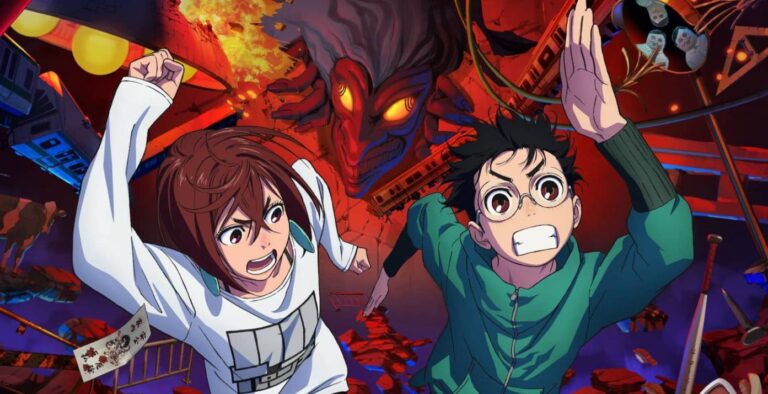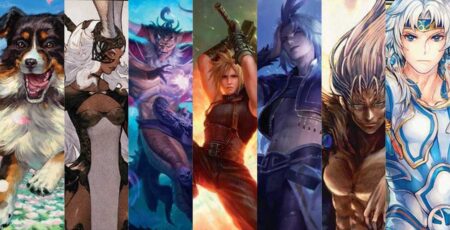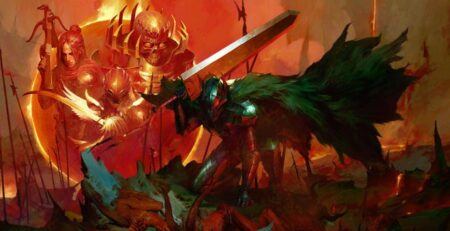Adapting manga to anime is an intricate art form that requires a delicate balance of preserving the source material’s essence while enhancing it for a new visual medium. At Anime Expo 2024, Director Fûga Yamashiro and Voice Actress Shion Wakayama offer an enlightening perspective on this process through their work on Dandadan. Together, they explore the series’ exploration of friendship and identity amidst its genre-shifting narrative, promising audiences an engaging and emotionally resonant viewing experience.
When asked about the challenges of adapting Dandadan from manga to anime, Director Fûga Yamashiro reflected on the series’ distinctive qualities. “When I first read the manga,” he shared, “I was struck by how it effortlessly integrates comedy and action. It’s a blend that defies traditional genre categorization.” Yamashiro emphasized his commitment to preserving this unique juxtaposition in the animation. “It was crucial to maintain the contrast between action-packed sequences and quieter, everyday life moments,” he explained. “Each character was assigned a specific color palette to visually enhance these shifts, ensuring the animation remains dynamic and engaging.”
Yamashiro also drew inspiration from the manga artist’s influences. “Yukinobu Tatsu’s love for early Ultraman was evident,” he noted. “We aimed to infuse the animation with both nostalgic and modern styles, creating a portrayal that captures the manga’s vibrant energy.” He expressed satisfaction with the result, affirming, “Our goal was to translate the scattered yet energetic essence of the manga into the animation, blending elements like hot and cold, soft and hard.”
Turning to the character of Momo Ayase, Voice Actress Shion Wakayama shared her insights into portraying this complex role. “Momo is what we call a ‘gal’ in Japanese,” Wakayama explained. “She’s confident, sometimes brash, using language that’s typically associated with male delinquents.” Wakayama acknowledged the challenge of balancing Momo’s tough exterior with her underlying vulnerability. “Despite her outward demeanor,” she said, “Momo has a softer side that I wanted to convey authentically in my performance.”
One of the most demanding aspects of voicing Momo, Wakayama revealed, was mastering the character’s frequent intense scenes. “Screaming was a new challenge for me,” she admitted. “I spent considerable time researching and practicing to ensure those moments felt genuine and impactful.” She expressed gratitude for the director’s feedback on her efforts, noting, “His guidance was instrumental in refining Momo’s voice and emotions throughout the series.”
When asked about the themes and messages he hoped to convey in the anime adaptation of Dandadan, Director Fûga Yamashiro delved into the narrative and emotional core of the series. “For me, Dandadan is more than just a blend of action and comedy—it’s a narrative journey that explores themes of friendship, identity, and personal growth,” Yamashiro began. “With characters like Okarun and Momo, I wanted to ensure that their relationship felt genuine and multi-dimensional. They’re not just friends or potential romantic interests; they are complex individuals whose interactions evolve over time.”
Yamashiro emphasized the importance of depicting the characters as equally significant. “I wanted to blur the lines between protagonist and co-protagonist. Okarun and Momo both drive the story forward, and their individual arcs are equally important. This approach helps highlight the importance of mutual support and understanding in their relationship,” he explained. “Their journey from friendship to moments of romantic tension adds depth to their interactions, making the audience invest emotionally in their development.”
Momo Ayase’s unique relationships with Okarun, her grandmother, and other characters are pivotal to the narrative of Dandadan. Wakayama provided insight into how she approached capturing the dynamics of these relationships through her voice acting. “Each relationship Momo has is distinct and crucial to her character development,” Wakayama began. “For instance, Momo’s bond with her grandmother is deeply affectionate despite her rough exterior. I wanted to ensure that even when Momo uses harsh language, the underlying love and respect she has for her grandmother come through. It was about finding the balance between her brashness and her softer side.”
When discussing her interactions with Okarun, Wakayama highlighted the importance of rhythm and tone. “The conversations between Momo and Okarun often have a comedic, back-and-forth banter akin to a manzai comedy duo, where one is the straight man and the other is the clown. Capturing this dynamic required precise timing and an understanding of the comedic beats,” she explained. “But there are also moments of tenderness and romantic tension between them. In those scenes, I softened Momo’s voice to reflect her vulnerability and the budding affection she feels for Okarun.”
Wakayama emphasized the collaborative process with Director Yamashiro in shaping these interactions. “We had many discussions about how to portray each scene authentically. For example, when Momo is talking to her grandmother, we focused on showing her as a ‘grandma’s girl,’ someone who, despite her tough exterior, is deeply caring. This meant using a gentler tone even when her words were harsh.”
She also spoke about the challenges of shifting between different emotional states. “Momo’s character goes through a wide range of emotions, from high-energy comedic scenes to intense action sequences and tender, heartfelt moments. It was important to convey these shifts seamlessly,” Wakayama noted. “In action scenes, Momo’s screams and battle cries had to be powerful and genuine. I spent a lot of time practicing these to make sure they felt real and impactful.”
Wakayama’s portrayal of Momo’s relationships was guided by a deep understanding of the character’s complexity. “Whether it’s the sibling-like camaraderie with Okarun, the respectful affection for her grandmother, or interactions with other characters, my goal was to make Momo’s emotions and relationships feel authentic. This involved not only altering my vocal tone and delivery but also embodying her emotional journey throughout the series,” she said.
Expanding on this, Yamashiro touched on the relatability of the characters. “I focused on making the characters’ emotions and experiences relatable to the audience. Whether it’s Momo’s struggles with her identity or Okarun’s journey of self-discovery, I wanted viewers to see a part of themselves in these characters,” he said. “In episode one, for example, we have scenes set in tunnels and hospitals that are designed to evoke real fear and tension. This relatability makes the fantastical elements of the story more grounded and impactful.”
As the conversation concluded, Fûga Yamashiro reflected on the overall message he hoped viewers would take away from Dandadan. “We want fans of the manga and new viewers alike to connect deeply with the characters and their journeys. Through their experiences, we hope to evoke a range of emotions and leave a lasting impression,” he remarked. “Ultimately, Dandadan is about finding strength in oneself and in others, navigating life’s challenges with humor, courage, and a sense of adventure.”
As Director Fûga Yamashiro and Voice Actress Shion Wakayama reflect on the adaptation of ‘Dandadan’ from manga to anime, their dedication to preserving its unique blend of comedy, action, and heartfelt moments shines through. Their insights into character development and thematic exploration reveal a meticulous approach to storytelling that promises an immersive and emotionally resonant experience for viewers. With their collaborative vision, Yamashiro and Wakayama invite fans and newcomers alike to embark on a journey filled with friendship, identity, and the vibrant energy that defines Dandadan.
Dandadan will receive a global theatrical release on August 31, 2024
This interview was edited for length and clarity and was conducted via a translator.







